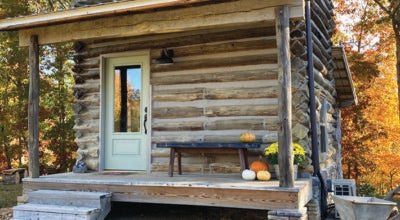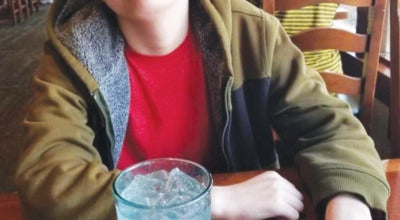The Literary Corner: Renegade Writer’s Guild
Published 10:35 am Thursday, August 29, 2019
|
Getting your Trinity Audio player ready...
|
“Pick Your Salt”
By N. R. Tucker
Sea salt is good for you. Everyone says so. Pink Himalayan salt is better. Everyone says so. Ionized salt, or normal table salt, is inferior in every way. Everyone says so.
I decided to do a little research. What I found is that there isn’t much difference among the three.
Sea salt is a result of evaporation from saltwater lakes and oceans. Once crystallized, the sea salt is raked up, washed, dried, and shipped to market. Sea salt is also a bit larger and is lovely on food. Table salt comes from land deposits and requires additional processing before it’s edible, making sea salt less processed than table salt.
Chemically, pink Himalayan salt is only 2% different from table salt due to trace minerals, including potassium, magnesium, and calcium, which gives it that pink color. Himalayan salt is less artificial and typically doesn’t contain additives.
Sodium is required to maintain proper fluid balance, and any of the three salts will do that. Iodized salt provides a good source of iodine, which is another necessary mineral. All three types are worthy. It depends on what you want.
Salt. Can’t live without it, can’t live long with too much of it. Pick the salt you prefer, but remember, all things in moderation is a good idea.
“A Look at Bullying”
By Julie Terry Cartner
Mrs. Ketter made a final sweep of her daughter’s long blonde hair. Then, looking at Maisy dressed in a new purple dress with her favorite character, a sparkly unicorn blazoned across it, she said, “Sweetie, you look beautiful, but remember what your daddy and I have told you. Being pretty on the outside means nothing…”
“I know, Mommy,…it’s your inside beauty that means everything,” Maisy giggled. “I have that memorized. Don’t worry. I know being kind is more important than being smart or pretty.” With that Maisy hugged her mom, picked up her warrior princess bookbag and headed towards the door. “My first day of big girl school, Mom, I don’t want to miss the bus.”
Quickly giving her daughter a hug and a kiss, Mrs. Ketter told her daughter to have a good day, and “Remember, I love you.”
“I love you too, Mommy. You have a good day at work. Catch some bad guys!” Mrs. Ketter was a detective on the Charlotte police force. Pinning on her shield, she too walked through the door.
As soon as Maisy stepped on the bus, Mrs. Ketter wiped her teary eyes, started her car, and prepared to pull out of the driveway. At the principal’s suggestion to all the new parents to treat the first day of school like every other day, Mrs. Ketter had not followed her Mom instincts to drive Maisy to school and walk her into her new classroom, but instead would follow the bus, watch Maisy walk into the school, then leave for work.
Maisy, excited for her first day of school, scanned the empty seats on the bus. Seeing several of her neighborhood friends laughing and chatting, she started to head towards them, but then realized they were making fun of a small, silent girl, huddled in a nearby seat. Maisy saw in a glance the girl was wearing ill-fitting clothes and carrying a well-used bookbag. Not the typical first day back to school attire. Immediately she changed direction and walked up to the forlorn girl.
“Hi, I’m Maisy. May I sit with you?”
Startled, the little girl nodded yes mumbling, “Sure, I guess, if you want to.”
Undeterred, Maisy continued. “What’s your name? What grade are you in? Where do you live?”
The little girl couldn’t help giggling. “That’s a lot of questions. My name is Denise, but my parents call me Desi. I’m starting kindergarten. We just moved here from San Antonio, Texas. My dad’s in the air force, and,” with only a small wobble to her chin, she added, “and he’s just been deployed.”
“What does that mean?” Maisy asked quietly, realizing Desi wasn’t far from tears.
“He’s being sent on a mission to stop bad guys,” was Desi’s response.
“Oh, that’s what my mom does too,” exclaimed Maisy. She’s a police detective in Charlotte. Every day when she leaves, I tell her to catch some bad guys. Is your dad being sent to Charlotte too?”
“No, he’s being sent far away, to another country, Afghanistan. He’ll be gone for six months, at least. I’m going to miss him,” Desi answered.
Realizing her new friend was close to tears, Maisy thought carefully before answering. “Wow, that’s got to be hard. I wonder what we could do to help?” For the next few miles, the two girls talked about things they could do for Desi’s father. They agreed that chocolate chip cookies would be a great start. Who didn’t love chocolate chip cookies?
Then Maisy had an idea. She called out to the other girls, her neighborhood friends, introduced them to Desi, then told them about Desi’s dad. Quickly enlisting their help, she soon had them all coming up with ideas for ways to help Desi’s father, and, before long, the rest of his military unit.
When the school bus pulled up to the school, Mrs. Ketter watched Maisy get out, holding hands with a little girl she had never seen, surrounded by girls she recognized from the neighborhood. Good job, Maisy, she thought to herself, as the gaggle of girls headed into the school.
“The Daguerreotype”
By Linda H. Barnette
It all began many years ago when my grandmother, Blanche Dwiggins Smith, gave me a daguerreotype of one of her ancestors who was killed in the Civil War. I wish I had asked her more about it, but being young and busy earning a living, I did not have time to pursue it and just let it stay in a dresser drawer. Now that I have retired, I devote much of my time to genealogy and writing. So I have not only discovered who was in the picture, but that information also led me to find out how many others from her family fought in the same war. The family information shared here is my own, but the specifics about the dates and regiments came from the following book: North Carolina Troops, published by the North Carolina State Department of Archives and History.
As it turned out, the daguerreotype is a photo of her grandmother’s brother, John Leach. He was born in Davie County in 1831, the son of James Leach and Mary Kurfees of the area known as Calahaln. A farmer as were most people in that era, he married Mary Warren in 1956. He enlisted in the Confederate Army as a private on Aug. 6, 1861 in Company F, 13th Regiment of North Carolina soldiers. He rose quickly in the ranks, became a sergeant, and served until wounded in the Battle of Chancellorsville, Va. Death followed in the army hospital in Richmond on Aug. 23, 1863. Apparently, he was buried in Virginia because there is not a cemetery location here in his home county.
John’s brother David, also my grandmother’s uncle, was a farmer here in Davie County who married Mellina Warren in 1842, enlisted in the Confederate army at age 25 in 1861. As fate would have it, David was wounded on the same day and in the same battle as his brother John. He, however, even after being wounded again in October of 1864, lived to return home. When he did, he resumed farming, and he and Mellina had five children. David died in 1892 and is buried along with most of my Dwiggins relatives in the Center United Methodist Church Cemetery in Mocksville.
One other Leach brother also served in the war after enlisting as a teenager. James Leach, born here in 1844, was listed as a farm laborer on his father’s farm, and joined the Confederates. He was killed at Cold Harbor, Virginia, on June 1, 1864. Place of his burial is also not known.
I can only imagine the grief and suffering of his parents and other family members upon losing not one, but two, young men in a war in which they likely had no stake. They were not, to my knowledge, slave owners themselves, but those young men apparently felt the call of duty to serve the South at that time.
I will never forget the look on the face of the young man in the picture, so young, so innocent, and so doomed.
“Is That Enough?”
By Stephanie Williams Dean
Celebrating our first Christmas together, my husband, Joe, and I exchanged gifts. After I opened my last present, one of several lovely gifts, he asked me, “Is that enough?”
Joe wanted to make sure he had spent enough on me or purchased enough gifts for me – a carryover from a past relationship.
Each gift I opened was more than generous. But deeper than that, the love and respect he showed me were the best gifts he had given me. So the simple answer to his question was yes.
Today, Joe’s words still echo in my ears. “Is that enough?”
From a spiritual perspective, the answer is no. Without my strong relationship with God, there is no number of gifts that could ever satisfy me. No matter how many beautiful presents I might receive, they would never be enough – without God in my life. If I didn’t recognize the power of the presence of the Holy Spirit within me, my life would be much like a hollow, empty shell.
Because God is deeply fulfilling, I already have all I need, and all I need is already enough. One can be caught up in all that is shiny and gold, but if you’re not caught up in a relationship with your maker, there’s just no amount of money, gifts, or material goods that will ever be enough to satisfy.
• For more information on Renegade Writers Guild, visit www.renegadewritersguild.wordpress.com. Submit a favorite memory of life in Davie County. Story should be typed and not more than 250 words. Please include your name and phone number or email address. RWG retains reprint rights. Email to lhb1@yadtel.net.





